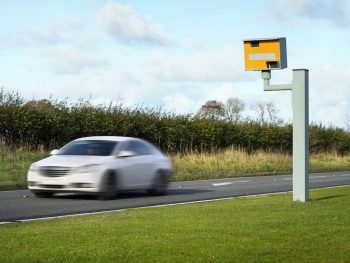‘Shocking’ levels of speeding in first lockdown revealed in new DfT data
Speeding cases rose by up to 7% during the first coronavirus lockdown, new Department for Transport data reveals.

The DfT data shows up to a 7% rise in cases of speeding on UK roads between Q2 2019 and Q2 2020
Building on anecdotal evidence and police reports of “extreme speeding” very early on in the initial lockdown, the figures indicate how some drivers took advantage of a sharp reduction in road traffic levels to break the speed limit.
This is shown by the percentage of cars breaking the speed limit on 30mph roads, which jumped from 56% in Q2 2019 to 63% in Q2 2020, while on 60mph single carriageway roads it increased from 10% to 17%. And on motorways it went up from 52% to 53%.
There were also jumps in more excessive speeding, measured in terms of cars exceeding the speed limit by 10mph or over, which went up from 6% on 8% on 30mph roads, 1% to 3% on single carriageway roads and 13% to 15% on motorways.
RAC head of roads policy Nicholas Lyes said: “This data confirms what we previously suspected: lower traffic volumes sadly led to some shocking levels of speed limit disobedience, particularly on 30mph limit roads. This dangerous behaviour unnecessarily put lives at risk during the first national lockdown when more people were walking and cycling. Empty roads should not be an excuse to drive dangerously and it would be frightening to think one of the legacies of the lockdown is a complete disregard for speed limits and other road users’ safety.”
Jack Cousens, head of roads policy at the AA, also said the increase in speeding on 30mph roads was of great concern, and pointed to some high-profile law-breakers caught during the first days and weeks of the lockdown.
“Early in the lockdown, there were incidents of extreme speed on motorways, main roads and even residential streets, particularly around London, as offenders thought the police would be busy enforcing the lockdown. However, through a series of high-profile ‘collars’ and social media, the police made it clear they were still on the case and that extreme speeders would be targeted.”
This included a speed enforcement operation launched by the National Police Chiefs’ Council in May.
Road safety and fleet organisations also warned about the risks for fleets from speeding drivers.
Cousens also warned that lockdown had brought other driving risks, including drivers at night encountering more deer and wildlife during and just after the lockdown, due to the quieter evening roads having lulled animals into a false sense of security.
He also cautioned that lockdown road restrictions initially intended to improve social distancing by travellers wary of public transport have led to urban traffic jams, with traffic having been squeezed into less road space.












